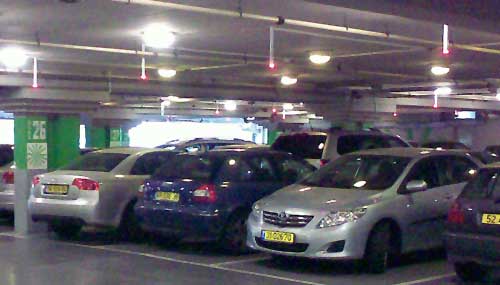People who design forms never cease to amaze.
This was very obvious in the era of paper forms. You’d get forms with fields that are patently too small for their content; like this snippet from one I recently filled:
Name ______________________________ E-mail ___________
Cellular: _____________________________________________
What were they thinking?? Many email addresses won’t fit on that short line; and the next line is far too long for a phone number. Why not switch the slots?
This situation is very common, especially when it comes to addresses; you often end up overflowing the allotted space, which can result in barely legible data. Which is really weird, because with a five minute effort the form’s designer could have made things right for thousands of users later on. Don’t they see how ridiculous it all is?!
Another problem is forms that get photocopied and/or faxed so many times that they’re barely legible at all; strangely, bureaucrats seem not to mind getting back forms whose fixed portion is smudged and illegible. Evidently it’s the act of forcing us to submit a formal form that counts, not whether you can read it…
And now, we are paperless; you’d think all would be well with electronic forms… but no. Some organizations I deal with actually mail you a scan of a smudged photocopy of a paper form, and ask you to print it out, fill it with pen and fax it back, adding to the smudging. And even when they send an editable electronic version, they never use the features available in the Word or PDF formats to steer the filling of the right fields. Instead, they just send around a plain document and expect you to type in the data; and since they use underlines to denote fields, we end up with forms like this:
First Name __________John Smith________________________
Address: ________100 Main street_______________________
and so on…
At least in this last case, you can put things right – put the word processor in Overwrite mode and replace the underlines with your text, or just delete the underlines, ending with:
First Name: John Smith
Address: 100 Main street
Then, if you import a scan of your signature in, you can send the filled form back as an attachment and be done with it!





 I’ve already
I’ve already 




 But here you see a sign I saw in Jerusalem on the wall of a house, next to its private parking area. It too says “Private parking – unauthorized vehicles will be towed”. But it does it in a much more friendly way… because of the little rose engraved between the lines. No idea who had this strange idea. Perhaps the owner likes flowers, as attested to by the bed of geraniums right under the sign? I can’t recall ever seeing a sign forbidding anything that left me in a cheerful mood, but this one certainly did.
But here you see a sign I saw in Jerusalem on the wall of a house, next to its private parking area. It too says “Private parking – unauthorized vehicles will be towed”. But it does it in a much more friendly way… because of the little rose engraved between the lines. No idea who had this strange idea. Perhaps the owner likes flowers, as attested to by the bed of geraniums right under the sign? I can’t recall ever seeing a sign forbidding anything that left me in a cheerful mood, but this one certainly did.